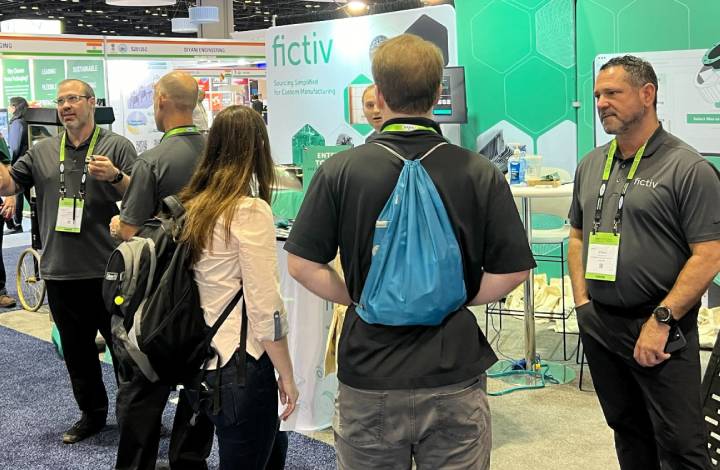
Last week Fictiv participated in the largest plastics show in North America. Hosting 55,000 attendees it covered everything from materials, machines, Injection Molding suppliers, 3D Printing players, you name it. Definitely present in big numbers were global supply chain managers looking for the right mix of suppliers especially with new tariffs recently introduced on the EV front; sustainability managers looking at how to ensure materials are advancing and looking for recyclable or biodegradable advancements, molders looking for the best tooling partners, you name it. The full spectrum of the ecosystem was there and the show was big.
Chinese manufacturers were there in full force, some from Mexico and even a few from Pune, India where there’s a sizeable pocket of Injection Molders.
Who wasn’t there was US manufacturers. I thought to myself, either they’re too busy and can’t come to the shows or we still haven’t made a dent with things like the IRA bill.
The introduction of the IRA (Invest in America) Bill is seen as a step towards reviving the manufacturing sector and encouraging companies to produce goods domestically. This blog aims to explore the significance of the IRA Bill and its potential to shape the future of American manufacturing.
The IRA Bill: An Overview
The IRA Bill, also known as the Invest in America Act, is a legislative proposal aimed at promoting domestic manufacturing and reducing reliance on foreign production. The bill offers various incentives and tax benefits to companies that invest in American manufacturing facilities, create jobs, and produce goods domestically. It seeks to address the challenges faced by American manufacturers, such as outsourcing, offshoring, and unfair trade practices.
Reviving American Manufacturing
The decline of American manufacturing has been a cause for concern, as it has led to job losses and a trade deficit. The IRA Bill aims to reverse this trend by incentivizing companies to bring their manufacturing operations back to the United States. By providing tax credits, grants, and subsidies, the bill encourages companies to invest in modernizing their facilities, adopting advanced technologies, and training a skilled workforce.
Benefits of Domestic Manufacturing
There are numerous benefits associated with producing goods in America. Firstly, it helps create jobs, boosting the economy and reducing unemployment rates. Manufacturing jobs tend to offer higher wages and provide stability for workers, contributing to a higher standard of living. Especially advanced manufacturing where programming machines and automation is now more prevalent than traditional approaches.
Additionally, domestic manufacturing reduces transportation costs and lead times, allowing for faster delivery and improved customer satisfaction. It also enhances national security by reducing dependence on foreign countries for essential goods.
Challenges and Opportunities
While the IRA Bill presents opportunities for American manufacturers, it also comes with challenges. One of the main concerns is the cost of domestic production, which can be higher than outsourcing to countries with lower labor and production costs. However, the bill’s incentives and tax benefits help offset these costs and make domestic manufacturing more competitive. Furthermore, advancements in automation and digital technologies provide opportunities to increase efficiency and reduce production costs.
Conclusion
The IRA Bill represents a significant step towards revitalizing American manufacturing and strengthening the economy. By incentivizing companies to invest in domestic production, the bill aims to create jobs, reduce dependence on foreign goods, and promote economic growth. While challenges persist, the opportunities presented by the IRA Bill, coupled with advancements in technology, offer a promising future for American manufacturing. As we move forward, it is crucial to support and embrace the resurgence of manufacturing in America, for it holds the potential to reshape industries and benefit the nation as a whole.
While this landscape plays out and ecosystems, partnerships and supply chains reform, global manufacturing partners like Fictiv can build you a supply chain built for speed to help you during the new product development stages, built for risk mitigation as you iterate toward your final design and built for maximum efficiency as you scale into Mass Production.
What’s key is you feel like you have a fluid but reliable fortune-500 class supply chain regardless of where in the world you are. And sourcing is simplified across any region or a combination of regions to get your end customers what they expect.

